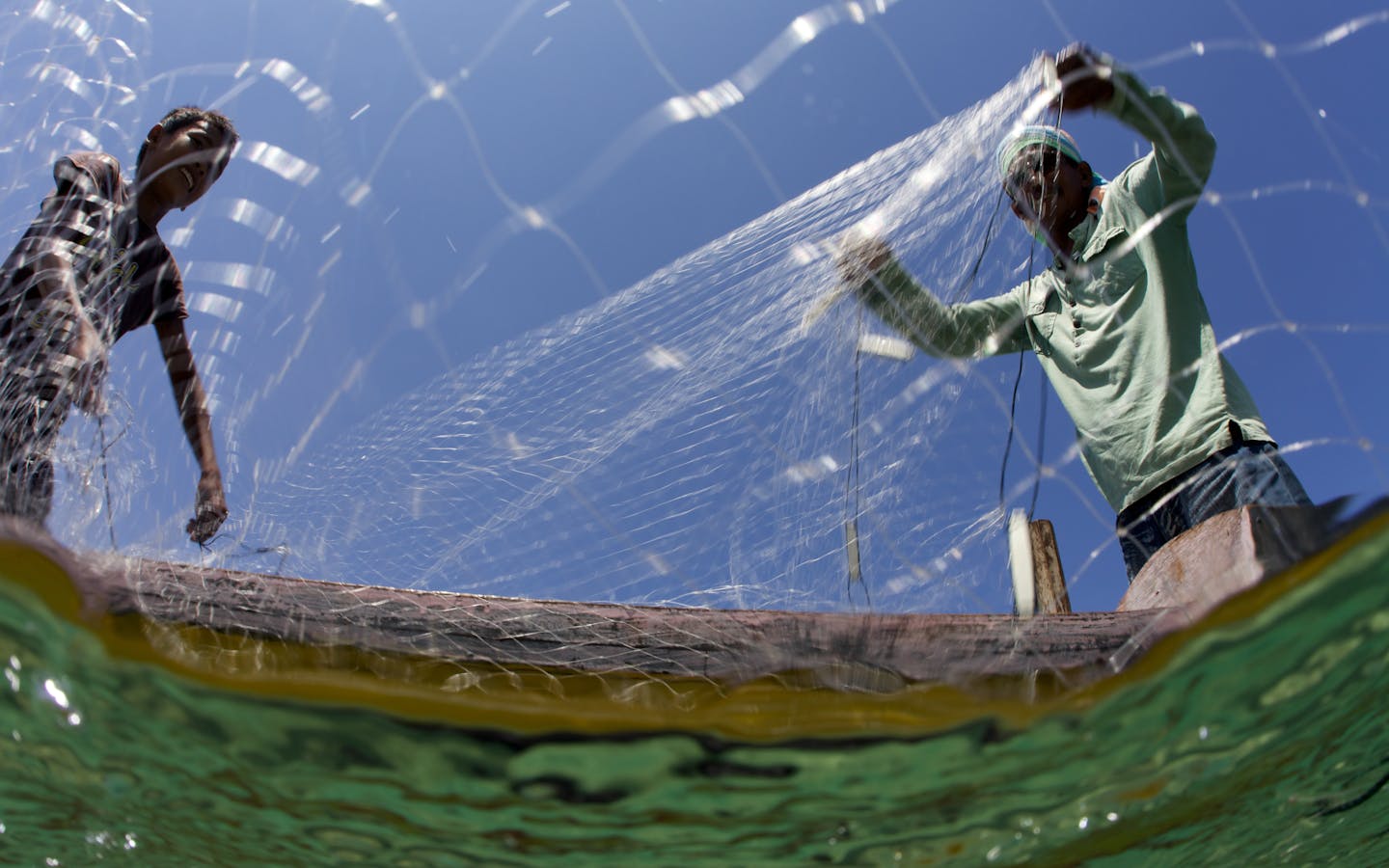Spanning 900,000 square kilometers (347,490 square miles) of waters between Indonesia, Malaysia and the Philippines, the Sulu-Sulawesi Seascape provides food, shelter, livelihoods and recreation to 40 million people.
It also boasts some of the world’s richest marine environments — beautiful and vast coral reefs, seagrass meadows and mangrove forests that host whales, sharks, rays, dolphins, turtles and a great diversity of fish.
All of these are now under threat from unsustainable fishing, pollution, and climate change.
Our role
Conservation International works with the three governments to safeguard the vital natural resources and the benefits they provide people — such as food, livelihoods and climate resilience. We do this through establishing marine protected areas and networks, and effectively managing these areas to reduce human pressures. Through this work, we can also ensure that threatened species, such as sea turtles, and their habitats are secured.
As climate change impacts become increasingly pronounced, we are also helping governments and vulnerable coastal communities adapt for the future.
The Sulu-Sulawesi Seascape is a priority transboundary seascape under the broader Coral Triangle Initiative — a partnership between the Philippines, Indonesia, Malaysia, Papua New Guinea, the Solomon Islands and Timor-Leste to address the urgent threats facing their shared coastal and marine resources.
Our plan

Protecting mangroves and fisheries
As the main source of protein for many communities who live within the Sulu-Sulawesi Seascape, fish represent food security and livelihoods. However their breeding grounds — mangroves and coral reefs — are under immense human pressure.
Through encouraging community-based conservation programs, Conservation International is working to provide financial stability to community members, while encouraging them to protect these ecosystems. We have worked with local communities to improve their fishing practices, and helped train, certify and equip more than 1,000 community enforcement teams to enforce management regulations alongside the local government. In addition, our work has encouraged local governments to allocate more funding towards this conservation effort, and we are expanding our work to include that of small pelagic species such as sardines, a vital source of food and income.

Establishing and managing protected areas with networks
Marine protected areas are most effective when established in areas where nature — and the benefits it provides — is most valued. Based on extensive scientific studies, Conservation International works in collaboration with governments to establish and expand protected areas to include areas of high importance. Together we have achieved a 21-fold increase in the size of marine protected areas and a 4.4-fold increase in the size of no-take zones — specific areas that allow fish populations to recover.
To maximize conservation impact, we are strengthening law enforcement across marine protected areas through training and equipping enforcement teams.
We are also supporting the establishment of a sea turtle marine protected area network, connecting turtle nesting sites and migratory routes across the Philippines, Indonesia and Malaysia — allowing them to flourish.

Adapting to climate change
Already, the impacts of climate change are being felt across the Philippines — as demonstrated when Typhoon Yolanda (also known as Typhoon Haiyan) slammed into their coasts. Through an ecosystem-based approach, Conservation International worked with the government to integrate the value of nature — in terms of food, fresh water and biodiversity — into climate change adaptation strategies and decision-making. We also provided trainings to local governments and communities, so they can assess the impacts and vulnerabilities resulting from climate change, and work to resolve these issues strategically — for both the immediate and long term.
Within the Sulu-Sulawesi Seascape, we work to protect communities from increasingly intense and unpredictable storm surges — an effect of climate change — through the rehabilitation of more than 100 hectares of mangroves and improved management of more than 400 hectares of these forests.
Our goal
Improved seascape-wide conservation
We aim that by 2018, we will have led the process of improving coordination and management across the seascape in collaboration with our partners, so that it is optimally effective in its goals of conservation and the support of human well being.




